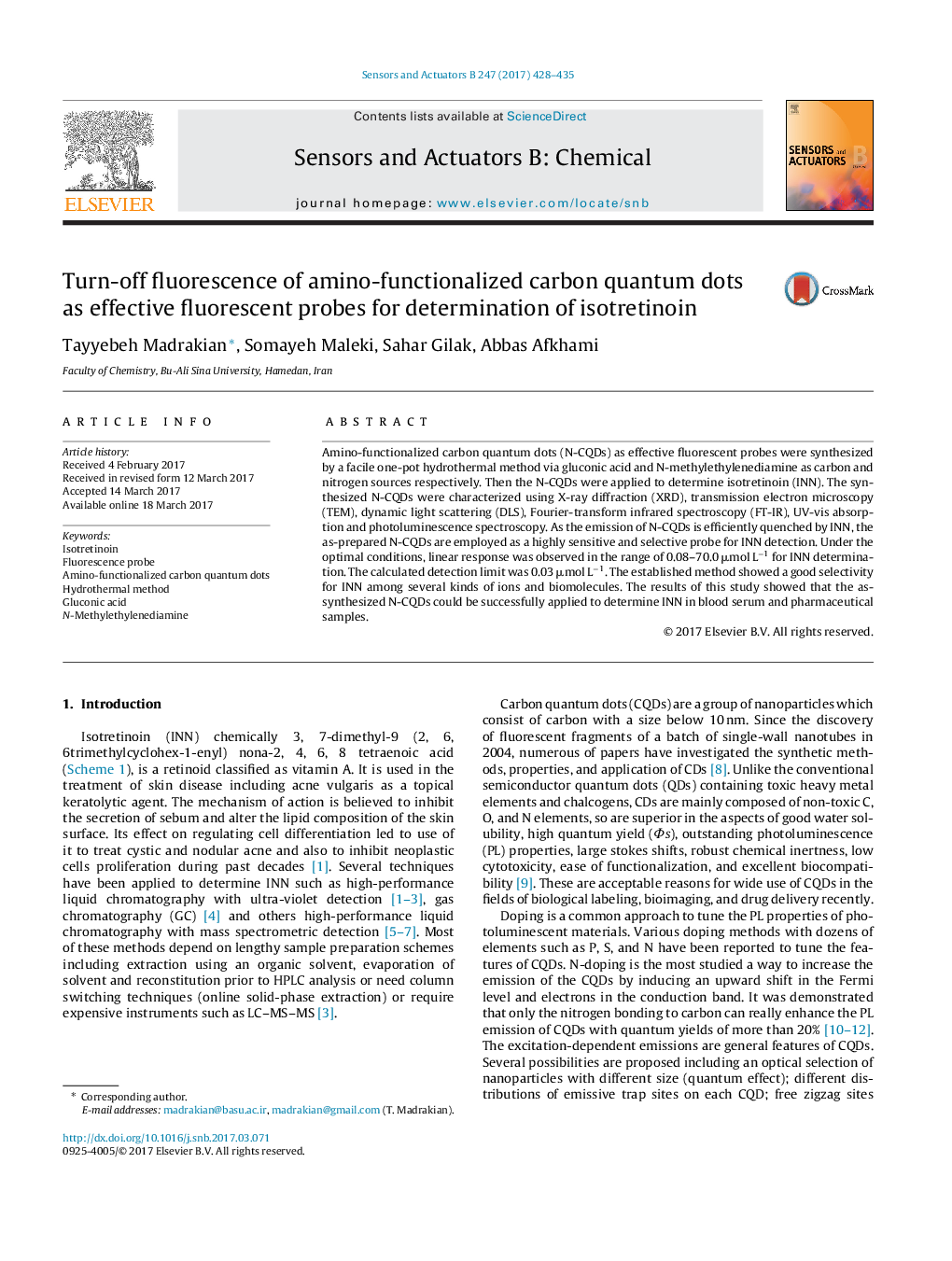| Article ID | Journal | Published Year | Pages | File Type |
|---|---|---|---|---|
| 5009391 | Sensors and Actuators B: Chemical | 2017 | 8 Pages |
â¢Amino-functionalized carbon quantum dots were used as effective fluorescence probes.â¢The fluorescence of N-CQDs was quenched in the presence of isotretinoin.â¢The quenching of N-CQDs induced by isotretinoin is static quenching.â¢Isotretinoin was measured at 0.03 mmol Lâ1 with good sensitivity and selectivity.â¢The probe has been successfully applied in serum and pharmaceutical samples.
Amino-functionalized carbon quantum dots (N-CQDs) as effective fluorescent probes were synthesized by a facile one-pot hydrothermal method via gluconic acid and N-methylethylenediamine as carbon and nitrogen sources respectively. Then the N-CQDs were applied to determine isotretinoin (INN). The synthesized N-CQDs were characterized using X-ray diffraction (XRD), transmission electron microscopy (TEM), dynamic light scattering (DLS), Fourier-transform infrared spectroscopy (FT-IR), UV-vis absorption and photoluminescence spectroscopy. As the emission of N-CQDs is efficiently quenched by INN, the as-prepared N-CQDs are employed as a highly sensitive and selective probe for INN detection. Under the optimal conditions, linear response was observed in the range of 0.08-70.0 μmol Lâ1 for INN determination. The calculated detection limit was 0.03 μmol Lâ1. The established method showed a good selectivity for INN among several kinds of ions and biomolecules. The results of this study showed that the as-synthesized N-CQDs could be successfully applied to determine INN in blood serum and pharmaceutical samples.
Graphical abstractDownload high-res image (95KB)Download full-size image
